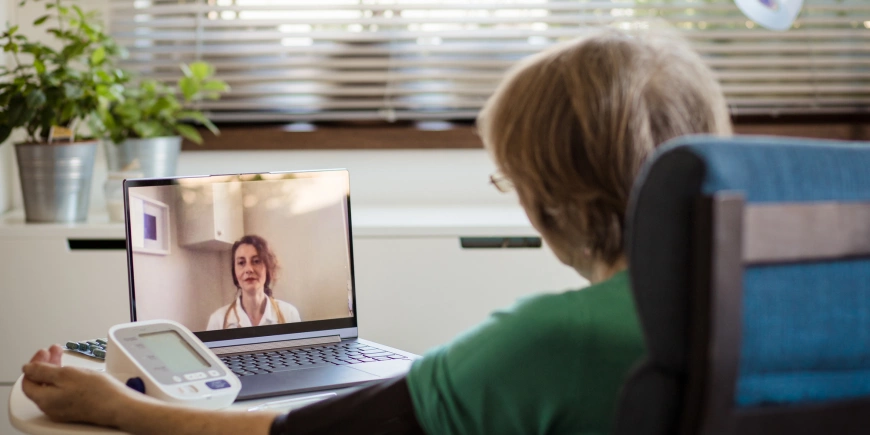Telemedicine: A Patient’s Point of View

Guest Blog: Submitted by Paula R. Freeman MA. This article was originally published in the July/August 2017 edition of Worcester Medicine. It's even more relevant in our post-pandemic world.
I’ll admit it: I’m a chronic worrier. It’s an inherited trait from my mother and her family! I worry about everything, but especially my health. Some ofthe non-pharmaceutical aids for this chronic condition include access to information and medical opinions, reassurance (both personal and professional) and, most recently, yoga lessons.
Working with a science- and health-related company, I have access to information related to clinical work and technical aspects of science and medicine, though I, myself, am not a scientist. I’m also not technically savvy; I can create a basic PowerPoint presentation or Excel spreadsheet, but I am less proficient with more advanced programs. I am, however, proficient with e-mail. When I learned about telemedicine from articles online and then found out that it would be available at my primary care physician’s practice, I had mixed feelings. Would I have to import or link to my information?
Would I FaceTime with my doctor to show him where it hurt? Would I have a chip implanted under my skin to track me and my biologicalsystems? (Did I mention I have an active imagination?) Since so much of my life is tied to e-mails and texts, I decided to see what it meant tobecome a user in a patient portal. My experiences surprised me. There are administrative tasks that can be accomplished on my computer or a smartphone app. I can make or check an appointment’s status, order a prescription refill or request a referral for a specialist in moments. I can read my blood work results quickly. (It’s nice to hear that your lipid profile is fine, but I like to see the numbers!) This saves time and allows me access to information I need to learn from and feel better informed about myself. Additionally, I receive updates to changes in the practice, keeping me informed of new staff, flu shot clinics and more. The monitoring aspect of telemedicine is amazing.
You can record blood pressure and blood glucose readings in the portal. You can also report weight, sleep hours and physical activity to produce real-time data for you and, more importantly, your doctor to monitor. Not only does it save time and travel for the patient, but the physician can also monitor your data to help you control or adjust your medication. I had to do this myself this year, and the data helped with a diagnosis and treatment. For me, it was a way to stay connected with my doctor and to observe my own progress from the privacy of my home, which allows for less disruption during the work day.
The most important aspect of telemedicine is the connection and bond I have built with my physician. Knowing that I can e-mail a non-emergency question that will be answered in a reasonable time is what I need for my own well-being. As my company develops targeted medicines, this tool allows me to continue a personalized conversation with my doctor long after my physical appointment. It is the connection of echnology, data and a personal touch that serve me well in my personal situation. It does not replace the in-person appointments or conversations, but it does offer a personal connection at a time when a kind word is the best medicine.
Paula R. Freeman has more than 25 years of experience and expertise as a human resources executive within the biotechnology industry. She holds a BA, magna cum laude, from Eisenhower College of the Rochester Institute of Technology (RIT) and a master’s degree from Brown University. Freeman authors an employment-related blog, www.JobEtiquettebyPaula.wordpress.com.
